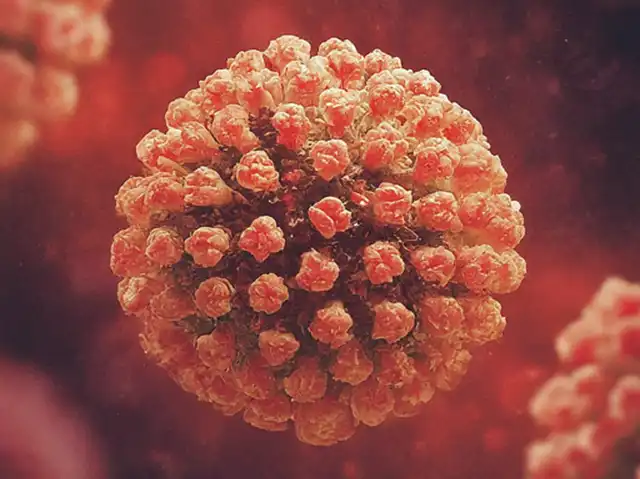A Beacon of Hope: CRISPR-Cas Gene Editing Shows Promise in Eliminating HIV
- Normal Liver Cells Found to Promote Cancer Metastasis to the Liver
- Nearly 80% Complete Remission: Breakthrough in ADC Anti-Tumor Treatment
- Vaccination Against Common Diseases May Prevent Dementia!
- New Alzheimer’s Disease (AD) Diagnosis and Staging Criteria
- Breakthrough in Alzheimer’s Disease: New Nasal Spray Halts Cognitive Decline by Targeting Toxic Protein
- Can the Tap Water at the Paris Olympics be Drunk Directly?
A Beacon of Hope: CRISPR-Cas Gene Editing Shows Promise in Eliminating HIV
- Should China be held legally responsible for the US’s $18 trillion COVID losses?
- CT Radiation Exposure Linked to Blood Cancer in Children and Adolescents
- FDA has mandated a top-level black box warning for all marketed CAR-T therapies
- Can people with high blood pressure eat peanuts?
- What is the difference between dopamine and dobutamine?
- How long can the patient live after heart stent surgery?
A Beacon of Hope: CRISPR-Cas Gene Editing Shows Promise in Eliminating HIV
For decades, HIV has loomed as a global health threat, affecting millions worldwide. While current antiretroviral therapy (ART) effectively manages the virus, a definitive cure has remained elusive.
However, a recent breakthrough by researchers at the University of Amsterdam (UMC) in the Netherlands has ignited hope.
On March 19, 2024, they presented a study at the European Congress of Clinical Microbiology and Infectious Diseases (ECCMID 2024) demonstrating the successful use of CRISPR-Cas gene editing technology to eliminate HIV from infected cells in a laboratory setting.

The Burden of HIV and Limitations of Current Treatment
HIV, the Human Immunodeficiency Virus, attacks the body’s immune system, progressively weakening its ability to fight infections. Left untreated, it can lead to Acquired Immunodeficiency Syndrome (AIDS). According to a 2022 report by the World Health Organization (WHO), approximately 38 million people globally are living with HIV, highlighting the ongoing challenges.
Current treatment options rely on ART, a combination of drugs that suppress viral replication, significantly improving the lifespan and health of patients [1]. However, ART has limitations. It requires lifelong adherence, which can be challenging due to factors like side effects and medication access. Additionally, the virus can establish reservoirs within immune system cells, where it remains dormant and undetectable by ART, posing a hurdle to complete eradication [2].
CRISPR-Cas: A Powerful Gene Editing Tool
CRISPR-Cas (Clustered Regularly Interspaced Short Palindromic Repeats–CRISPR-associated) is a revolutionary gene editing technology that has emerged as a powerful tool for manipulating genetic material. It functions like a molecular scalpel, allowing scientists to precisely cut and modify DNA sequences. This offers immense potential for treating various diseases with a genetic component, including HIV.
The groundbreaking research at UMC, led by Dr. Elena Herrera-Carrillo, utilized CRISPR-Cas to target and eliminate HIV DNA from infected cells. Their approach involved a “combinatorial CRISPR-attack,” employing multiple guide RNAs (molecules that direct CRISPR-Cas to specific locations on the DNA) to target various regions of the viral genome. This strategy aimed to enhance the efficiency of HIV eradication and minimize the likelihood of the virus developing resistance [3].
Promising Results in a Laboratory Setting
The study conducted by Dr. Herrera-Carrillo’s team demonstrated promising results in laboratory cell cultures. They successfully used CRISPR-Cas to eliminate HIV from various types of immune cells, including those known to be viral reservoirs. This is a significant advancement, as these hidden reservoirs are a major obstacle in achieving a cure [4].
A Pivotal Step Towards a Cure, But Further Research Needed
The researchers emphasize that their work represents a critical proof-of-concept, not a readily available cure. While the results are encouraging, significant hurdles remain before CRISPR-Cas can be translated into a safe and effective HIV therapy in humans.
Optimizing delivery methods to ensure the gene editing machinery reaches the target cells effectively and safely is a crucial next step. Additionally, extensive clinical trials are necessary to evaluate the treatment’s efficacy and safety profile in human patients. These trials will involve meticulously monitoring potential side effects and ensuring the treatment doesn’t inadvertently disrupt healthy genes.
Addressing Ethical Considerations
The potential of CRISPR-Cas gene editing raises important ethical considerations. Off-target effects, where unintended changes occur in the genome, are a potential concern that necessitates rigorous safety testing. Additionally, the possibility of germline editing, altering genes that can be passed on to future generations, requires careful ethical discussions and regulations [5].
Conclusion: A Hopeful Outlook for the Future of HIV Treatment
The University of Amsterdam’s research using CRISPR-Cas to eliminate HIV from infected cells marks a significant advancement in the quest for a cure. While challenges remain, this breakthrough offers a beacon of hope for millions living with HIV. Continued research and development hold the promise of translating this laboratory success into a safe and effective clinical therapy, potentially leading to a future free from the burden of HIV.
Citations
- [1] (Antiretroviral therapy (ART) for treatment and prevention of HIV infection in adults and adolescents: recommendations for a public health approach (2021 Update), World Health Organization)(https://www.who.int/news/item/16-07-2021-who-publishes-new-consolidated-hiv-guidelines-for-prevention-treatment-service-delivery-monitoring)
- [2] (Recent Advances in HIV Reservoir Research, Chaudhary et al., 2023, Trends in Microbiology)(https://www.liebertpub.com/doi/full/10.1089/apc.2023.0028)
- [3] (HIV in cell culture can be completely eliminated using CRISPR-Cas gene editing technology, increasing hopes of cure, EurekAlert!, 2024) (
A Beacon of Hope: CRISPR-Cas Gene Editing Shows Promise in Eliminating HIV
References:
Antiretroviral therapy (ART) for treatment and prevention of HIV infection in adults and adolescents: recommendations for a public health approach (2021 Update). World Health Organization. (Accessed March 20, 2024).
Chaudhary, S., & Kashanchi, F. (2023). Recent Advances in HIV Reservoir Research. Trends in Microbiology, 31(2), 142-157.
HIV in cell culture can be completely eliminated using CRISPR-Cas gene editing technology, increasing hopes of cure. EurekAlert! (2024).
(source:internet, reference only)
Disclaimer of medicaltrend.org
Important Note: The information provided is for informational purposes only and should not be considered as medical advice.



